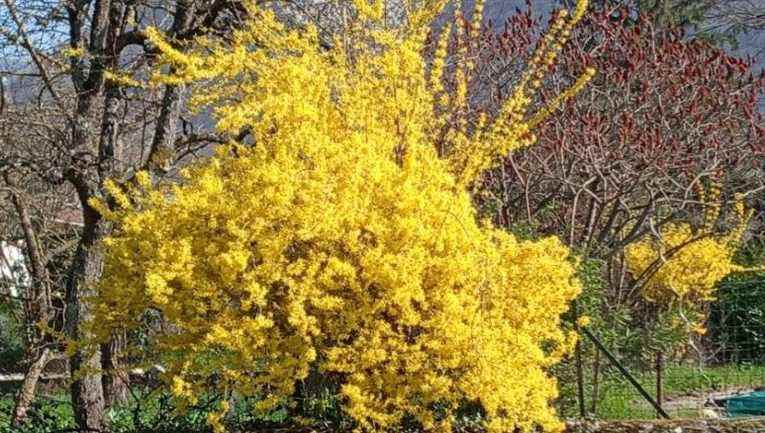What characterizes it,
Also called “dry wood cuttings”, woody cuttings are done in winter with twigs from the previous year. It does not require heat, or protective blanket, or hormone intake, basically: no special care.
The name Cuttings of wood is inappropriate in my opinion because the dry wood is dead wood.
What plants can we propagate in this way?
Plants, trees and shrubs, which have the easiest time to emit roots since no special precautions are taken apart from making the cutting. (See list in appendix)
The technique :
In January of year n, we choose branches of year n-1, therefore the most recent.
It is necessary to choose vigorous stems, and healthy, not parasitized,
– Jacques Ginet
Cut cleanly and perpendicularly just under one eye (bud), for the bottom of the cutting, and bevel just above an eye 12 to 20 cm higher.
We can often make several cuttings on the same branch but we must avoid taking the upper part too thin because it does not have enough reserves to produce roots.
The length of the cutting depends on its diameter and the number of existing eyes. There must be a minimum of 3, which sometimes, due to the spacing of the eyes can lead to see cuttings of more than 20 cm. This can be the case with very vigorous trees such as the plane tree for example.

– Jacques Ginet
Next :
The cuttings made are put in small bundles by grouping them by size and especially by arranging them all in the same direction. (This is quite simple since the cuts are perpendicular to the branch at the bottom and beveled at the top.)
These small bundles are immediately put in gauge* for winter.
This is done by burying the bundles lying down, preferably in sand, it can also be done in loose soil. Just cover these sticks only 3 to 5 cm.

– Jacques Ginet
They’ll spend the rest of the winter like that. During this wintering, a scar callus will begin to form at the base of the cuttings and sometimes also under the eyes.
Transplanting,
Later in the season, in the spring when the vegetation has started in the garden, that is to say when the buds have hatched on the trees, shrubs, it will be time to collect our cuttings.
Gently dig them up, cut the ties without damaging the cuttings, then transplant them into the nursery.
That is to say in loose soil, well prepared with a little organic matter, the cuttings will be driven deep into the substrate so that only the terminal bud emerges out of the ground.
A little watering will be welcome, and if the spring is really dry, it will take a few more, but not too much, just enough to prevent the soil from drying out strongly.
In the following autumn, these plants will be good to be replanted in nursery rows for their training, which will last between 1 and 3 years.
Annex
Some examples of plants to cut in winter: abelias, forsythias, currants, blackcurrants and cassis, syringes, privets, weigelias, poplars (except populus lasiocarpa), plane trees, willows …
NB: Regarding roses, it depends on their genetic line. Some wild roses are easily cut down just like their descendants. For example tea roses and tea hybrids, in general the old varieties. For some varieties, this does not work.
* The gauge is a place that has light soil that is easy to work (often sand) where trees awaiting planting are stored (buried temporarily).
Listen to the Sunday morning gardening show on France bleu Isère from 9 am to 10 am. You can call to ask your questions or give an opinion on 04 76 46 45 45.
